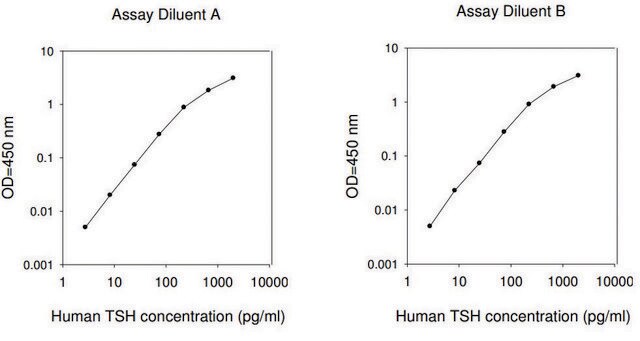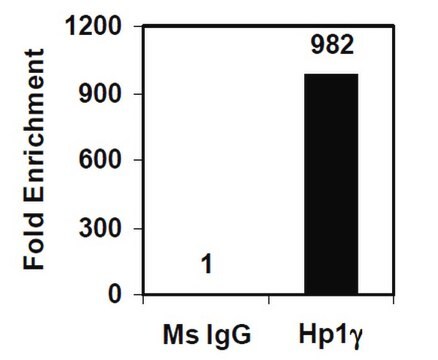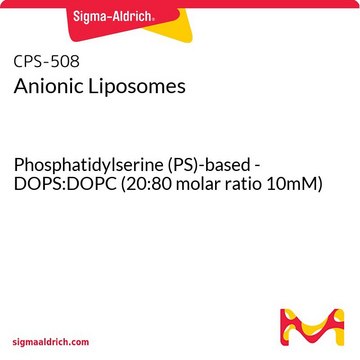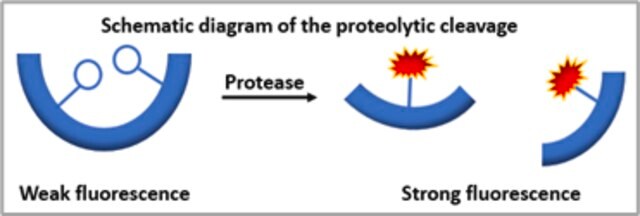CHP2NC
Imprint® Ultra Chromatin Immunoprecipitation Kit, Without Controls
ChIP kit for maximum sensitivity, compatible with Next-Gen sequencing
About This Item
Produtos recomendados
Categorias relacionadas
Descrição geral
Aplicação
- Suitable for downstream applications
- Individual target characterization to genome-wide profiling techniques
- Characterization of signal transduction pathways
- Verification of ChIp-chIP and ChIP-seq data
Características e benefícios
- Use successfully CHiP′ed DNA associated with low abundance, medium, and highly expressed transcription factors, as well as histone modifications
- Greater capacity - can be used over a wide range of cell numbers ranging from 2-10 × 106
- Maximum sensitivity - capable of detecting low abundance transcription factors with as little as 2 × 106 cells
- Employs DNA-Blocked "Staph-Seq" for IP (immunoprecipitation), minimizing contaminating Staph A DNA in downstream ChIP-Seq applications.
Informações legais
Somente componentes do kit
- Sodium dodecyl sulfate solution, for molecular biology, 10% in 18 megohm water
- Monoclonal Anti-POLR2A antibody produced in mouse, clone 1F17, purified immunoglobulin, buffered aqueous solution
Componentes do kit também disponíveis separadamente
- S6576ChIP Next Gen Seq Sepharose™SDS
- I8896IGEPAL® CA-630, for molecular biologySDS
- S5150Sodium chloride solution, 5 M in H2O, BioReagent, for molecular biology, suitable for cell cultureSDS
- W4502Water, Nuclease-Free Water, for Molecular BiologySDS
- I5006IgG from rabbit serum, reagent grade, ≥95% (SDS-PAGE), essentially salt-free, lyophilized powderSDS
- I5381IgG from mouse serum, reagent grade, ≥95% (SDS-PAGE), lyophilized powderSDS
- A7638Bovine Serum Albumin, lyophilized powder, essentially globulin free, ≥99% (agarose gel electrophoresis)SDS
- A84564-(2-Aminoethyl)benzenesulfonyl fluoride hydrochloride, ≥97.0% (HPLC)SDS
- D9156Deoxyribonucleic acid, single stranded from salmon testes, For hybridizationSDS
- M7023Anti-Mouse IgG (whole molecule) antibody produced in rabbit, IgG fraction of antiserum, buffered aqueous solutionSDS
- P8340Protease Inhibitor Cocktail, for use with mammalian cell and tissue extracts, DMSO solutionSDS
- R4642Ribonuclease A from bovine pancreas, (Solution of 50% glycerol, 10mM Tris-HCL pH 8.0)SDS
Palavra indicadora
Danger
Frases de perigo
Declarações de precaução
Classificações de perigo
Acute Tox. 4 Oral - Aquatic Acute 1 - Aquatic Chronic 1 - Eye Dam. 1 - Flam. Liq. 3 - Met. Corr. 1 - Ox. Liq. 1 - Resp. Sens. 1 - Skin Corr. 1B - STOT SE 3
Órgãos-alvo
Central nervous system
Código de classe de armazenamento
5.1A - Strongly oxidizing hazardous materials
Escolha uma das versões mais recentes:
Certificados de análise (COA)
It looks like we've run into a problem, but you can still download Certificates of Analysis from our Documentos section.
Se precisar de ajuda, entre em contato Atendimento ao cliente
Já possui este produto?
Encontre a documentação dos produtos que você adquiriu recentemente na biblioteca de documentos.
Artigos
Epigenetic modifications are thought to occur through two key interconnected processes—DNA methylation and the covalent modification of histones.
Protocolos
Chromatin Immunoprecipitation qPCR for studying gene regulation across conditions.
Conteúdo relacionado
Protein and nucleic acid interaction reagents and resources for investing protein-RNA, protein-DNA, and protein-protein interactions and associated applications.
Nossa equipe de cientistas tem experiência em todas as áreas de pesquisa, incluindo Life Sciences, ciência de materiais, síntese química, cromatografia, química analítica e muitas outras.
Entre em contato com a assistência técnica














